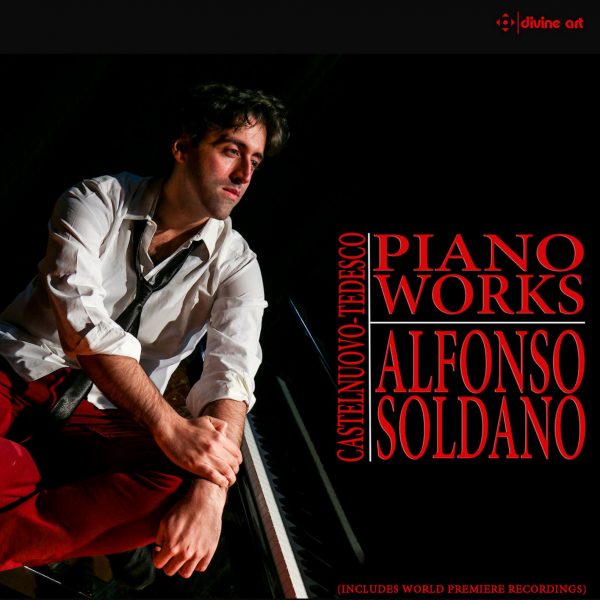Music Voice
Until a few decades ago, the name of Mario Castelnuovo-Tedesco was almost always associated with his guitar works, and the Florentine musician is regarded as one of the greatest composers of the twentieth century for this instrument. Then, fortunately, everyone began to understand that this musician, who left Italy in the aftermath of the racial laws in 1939 to move to America, where he took the citizenship six years later, had left a catalogue of works that covers almost every genre of composition and that, inexplicably, the corrosive action of the time had led to its neglect, despite the fact that his contemporaries (people like Toscanini, Heifetz, Piatigorsky, Segovia, Barbirolli, Casella) had admired him and looked for him to collaborate with. Sometimes, however, if time removes, time gives, and then in recent years there has been a sort of “Castelnuovo-Tedesco Renaissance”, thanks to which it was realized that the Italian-American composer was really a great composer, able to leave a distinctive mark, a trace, a compositional and expressive idea with a decidedly European feel.
And this new record release allows us to better understand one of the many compositional facets of the Florentine musician, one dedicated to piano works. Presenting it is the young pianist from south Italy Alfonso Soldano who, having made the Ukrainian composer and pianist Sergei Bortkiewicz known in the West (also sketched in an essay-novel, The Border of Deception, published by Florestan Editions), wanted to take back a project left unfinished by his mentor, the great and late Aldo Ciccolini, to bring out the piano work of Mario Castelnuovo-Tedesco. Here, then, in absolute world premiere, pieces like “Notturno in Hollywood” and “Sonatina Zoologica”, as well as “Alt Wien. Viennese Rapsodia “,” Vitalba e Biancospino, Silvana fairy tale “,” Cantico “” 2 Film Etudes “, the debutant ” Cielo di Settembre “and” Piedigrotta 1924 – Neapolitan Rapsodia “, in which a certain “dandystyle” refined and diluted in everyday social life (Castelnuovo-Tedesco was born from one of the richest families in Florence) is employed and set musically by the author to depict emotions, thoughts, images of an inner reality (also made of dreams and fairy-tale visions of which the musician was always fascinated and in which “Vitalba e Biancospino” represents an exemplary case) in which the piano development, in this case, is transformed into a medium through which to align itself with the modern artistic and cultural impulses of its time. Yes, because Castelnuovo-Tedesco despite being a “modernist” is certainly not an “experimenter”, because for him music is above all a story “with” the sounds, with a harmonious and melodic contribution that does not overflow to turn into a search ” of “sounds explained with the birth of a new language, as it will be in the case of Schönberg and Vienna’s Second School.
Therefore, the image of Castelnuovo-Tedesco will not be forced into the ways of that French tradition (but I would also add those colors, those warm and at the same time sharp tones of a Granados) that left Fauré in the background behind first Debussy and then, above all, Ravel. And here the keyboard really becomes a place for an encounter between the personal impressions of the author with his desire to narrate them, to sketch them with the force of a timbre which is a color patch bounded by ways that sometimes assume the lines and rhythms of a precise and articulated form (think of “Alt Wien” and Opus 1 “Cielo di Settembre”). And also in works in which the historical and personal actuality of the author, as in “Notturno in Hollywood” and “2 Films Etudes”, the result of the work of author of soundtracks for American cinema, for which Castelnuovo-Tedesco worked , salaried by Metro-Goldwin Mayer, become cues of elaboration, this need to tell, to show sound images, does not abandon its creative verve, but is fixed in intense (and tormenting) dialectical brush strokes, able to transmit the intensity of emotion-color.
It goes without saying that works of the genre, to be best rendered, enhanced in their expressive concreteness, need an interpreter able to show virtuosity (“Piedigrotta 1924” is a clear case) in continuous balance with the desire to tell, without overdoing the first to the detriment of the latter, with the ability to paint with the keyboard the refined palette of colors, without however apologizing in a slavish way the symbolist styles of a Debussy and a Ravel – styles from which Castelnuovo-Tedesco draws, certainly , but not solutions that are an end in themselves. Thus, Alfonso Soldano’s reading turns out to be ideal, probably full of that lesson, of that vision, of that interpretative dimension expressed by his mentor Ciccolini and exemplarily metabolized by him and developed in an exquisitely personal artistic journey. At the piano Castelnuovo-Tedesco requires a tightrope walker capable of expressing subtleties and flashes, discursive phrases and timbre eruptions, even ironic descriptions (“Sonatina Zoologica”) and abyss-like introspective gaps: aspects and peculiarities in which the young pianist from Italy manages wonderfully, giving back an introductory and overall picture coherently accomplished. It is also good sound, able to reproduce perfectly, both in the dynamics and in the detail, the sumptuous timbre of the ‘long tail’ Steinway, as well as the sound stage that even if it appears forward, nothing detracts from the correctness of the sound space produced.
Artistic value 5 / 5 technical value 4 /5
@divineartrecordingsgroup
A First Inversion Company
Registered Office:
176-178 Pontefract Road, Cudworth, Barnsley S72 8BE
+44 1226 596703
Fort Worth, TX 76110
+1.682.233.4978












